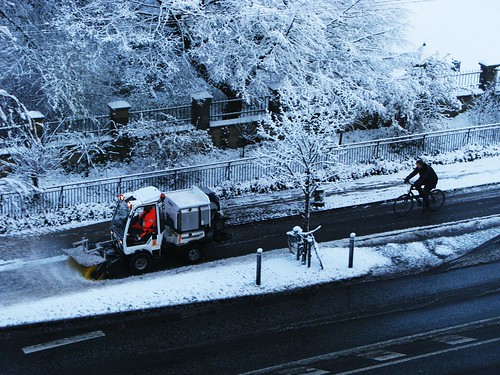Edit 2012/11/10: GRT has now released its official options and I have revised this article to use the new images and corrected for details that have changed since the council submission.
Big changes coming to GRT, mainly within the city of Waterloo. The establishment of the 202 "University Avenue Express" and the extension of 201 iXpress require some rethinking of existing routes. The region is looking for public input on a number of options at public consultation centres being held in November. Are you going?
It has taken me a while to process the east Waterloo options.
There are three "east" options being presented.
In all options, the 201 Fischer-Hallmann iXpress is extended past the university to Conestoga Mall, and then on to Northfield & University. The University iXpress also terminates here, but how it gets there is different.
Also, 6 and 35 are "crossed": they swap their downtown endpoints, 6 goes to Uptown and 35 goes to Downtown. In doing so, they are much straighter than before, which helps them act as better grid participants. Presumably 6 will be linked to the western 5 route at Uptown, as 35 was before.
The Contenders
 |
| Option 1 |
Option 1 is probably the simplest. The University iXpress left-turns at Bridge St. Apart from the 6/35 swap, eastern routes remain largely unaltered (12 is tweaked.)
Strengths:
- Bridge St. is well served, at least between Northfield and University.
- 35 is now an (albeit slow) north/south route.
- The future "minor node" at Northfield and Bridge is very well served, with access to it for much of the northeast area. (Disclaimer: I work here and this is personally important.)
- Duplication of iXpress between Northfield/Bridge and Northfield/University
- There are three ways to get from Northfield/Bridge to Conestoga Mall. Seems excessive.
- 12 is almost completely pointless in this configuration. Only a fraction of possible trips on the 12 are not provided by other routes, faster and more frequently.
 |
| Option 2 |
Option 2 really shakes things up. The University iXpress stays on University. 35 is (partially) straightened out. 31 shortcuts along Bridge St.
I see this option as intriguing, but flawed.
Strengths:
- 35 starts to resemble a legitimate grid participant along the east side.
- 6 (presumably cross-linked to the 5 on the west side) is a nice east-west grid line.
- An intriguing new route for the Lincoln neighbourhood.
- Less iXpress duplication.
- A more useful 12; Weber St. north of University finally sees some service.
- 31 is a monumental waste. It provides some minimal value along Lexington and that's it (and there isn't much along that stretch, either). Short-cutting it up Bridge makes no sense: whose time are you saving? The people trying to reach Conestoga Mall, who could take 201 or the new Lincoln route instead?
- 35 is half-heartedly straightened out. Its remaining neighbourhood wander diminishes its value as a way to get up and down the east side by adding substantial delay (close to 10 minutes.)
 | |
| Option 3 |
Option 3 puts 31 in the configuration it should have had in Option 2. 35 is bent and spindled past recognition. 12 is cut short
I'm not sure which of Options 1 and 2 are the Good and the Bad, but Option 3 is definitely the Ugly. This is a disaster for anyone trying to get up and down Bridge St.
Strengths:
- Nothing that Option 2 doesn't already accomplish better.
- Demonstrates the routing that Option 2's 31 should have.
- Complete failure to provide a north/south grid route on the east side.
- Big degradation of service for the Bridge Street corridor, accessibility to the Bridge/Northfield minor node.
Additional Thoughts on All Options
The new University iXpress provides a nice east-west route through the university district and it will be very valuable in either of its two proposed routes. In one configuration, it provides the Bridge St. corridor with good service. In the other, it ventures into the less developed University East area, but in doing so it might be a more "legible" route.Of course, by doing that, people might start to ask "Why not make it University Avenue all the way across?" And why not? Combined with a sold Erb/Bridgeport limited-stop route through Uptown, we might have something viable. But that's not in the cards...
If we run the University iXpress up "around the horn" instead of Bridge St., it opens up a compelling routing for the 35 as an east-side north-south connector. But it needs to be more direct than Option 2 shows, sticking to Bridge and Lancaster all the way to Wellington or Victoria. (Though the short Auburn Drive detour at University is reasonable.)
While I would love to see 4 bus routes converge at Bridge and Northfield, and keep my current bus route to work, I have to say that Option 2 is probably the best starting point. Swapping Eastbridge detour duties from 35 to 31 is a no-brainer.
But what about what is possible, but not presented? TriTAG member Duncan Clemens has put together his vision of a restructured route network in this google map. He has some of the same ideas: Use Bridge and Lancaster as a corridor. Make 31 pick up the Eastbridge neighbourhood slack.
Hopefully the PCC will provide opportunities for some of these good ideas to bubble up to the surface. And hopefully we'll end up with something globally useful, and not deformed by competing self-interest.






























